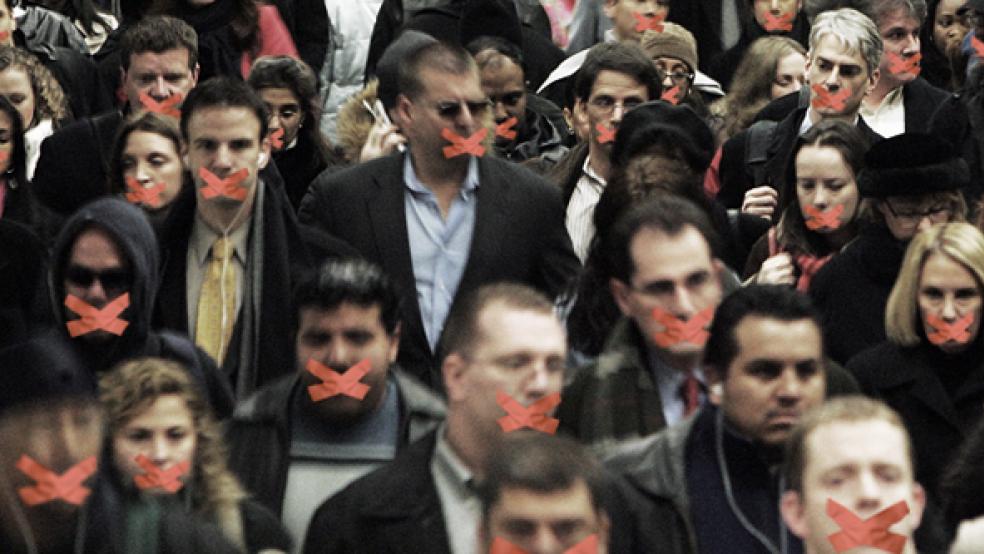When the April unemployment rate dropped a notch despite the humdrum jobs report, most analysts assumed more frustrated Americans had given up searching for work.
Politicians seeking to oust the incumbent administration seized on the latest numbers. They said counting those who would like to work but have given up applying for jobs – the 968,000 officially “discouraged” workers, up 100,000 from March – would have driven the unemployment rate to 11 percent, not the 8.1 percent officially reported.
“The share of the actual labor force that is working or looking for a job (known as the labor force participation rate) fell in April to the lowest level in over 30 years,” the Republican-run House Ways and Means Committee chairman Dave Camp said in a press release.
President Obama, meanwhile, whose reelection bid may well hinge on the economy’s performance between now and November, vowed to do better. “There is still a lot of folks out of work, which means we’ve got to do more,” he said at a campaign rally in Virginia.
But are more people actually becoming discouraged as this weak recovery stumbles along? Is this one more signpost confirming fears that this decade is turning into a second straight decade of subpar economic growth?
A closer look at the numbers, while it may not provide solace for the 21.3 million Americans who are unemployed or prefer full-time to part-time work, does not support the idea that more people are simply giving up. Last month’s nearly one million discouraged workers, a number that bounces around from month to month, was unchanged from a year ago and was down considerably from the 1.2 million who were discouraged at the trough of the Great Recession in late 2009.
The trend looks even better if one looks at those considered marginally attached to the work force – which includes the discouraged but also counts those who have dropped out because they have returned to school, are dealing with family matters or simply found something else they’d rather do. There were 2.4 million such people in April. Since there were 100,000 more discouraged workers, it meant the ranks of otherwise engaged had actually fallen by 100,000.
By pulling back and taking the long view, one finds that while the labor participation rate is falling, the trend started long before the Great Recession. In fact, the rate, currently at 63.6 percent of the adult population over 16 (a level not seen since December 1981), began dropping in early 2000 when it peaked at 67.3 percent.
“A big part of what is happening here is a long-term trend,” said Timothy Taylor, managing editor of the Journal of Economic Perspectives, which is published by the American Economics Association. “Low-skilled men aren’t working, and women aren’t increasing their proportion as a share of the labor force any longer. They’re not a whole lot lower (than men) anymore.”
Women began entering the workforce in droves in the 1960s, raising their labor force participation rate from the low 30s to the current level which is around 60 percent. The rate for women, some of whom still stay home with the kids, has probably maxed out and appears to be even falling some.
Men, meanwhile, have been steadily less inclined to join the workforce since the late 1940s, falling from the high 80s to the current 70 percent participation rate. Experts said a disproportionate share of the men who’ve dropped out of the workforce are poorly educated and lacking the skills to compete in a post-industrial job market that no longer values the physical or repetitive tasks that characterized a lot of jobs during the industrial era.
“Labor force participation for unskilled men has dropped off the table the last few decades,” Taylor said. “Wages for that group aren’t high enough to encourage them to work. For a lot of those men, going on disability may be a better option. Working off the books may be going on. The benefits of working at $10 or $11 an hour just isn’t enticing 50-year-old men into the labor force,” he said.
Another factor in play: there were an estimated 2.3 million people in U.S. prisons at the end of 2010, the highest rate of incarceration in the world. That’s quadruple the number imprisoned in 1980. The rate of imprisonment has gone from 100 per 100,000 people in the mid-1970s to 500 per 100,000 today.
Looking ahead, the big question is what the 77 million Baby Boomers will do. The oldest have already passed 65 and are eligible for Social Security and Medicare. If they leave the workforce at the normal retirement age, currently set at 67 for younger Boomers, the labor force participation rate will continue to drop simply because of the sheer size of the cohort.
However, many boomers are inadequately prepared to finance retirement. Most do not have pensions and many have inadequate or non-existent savings in their retirement accounts. Even those who saved were hammered by a decade of meager stock market returns and, in some cases, bad luck or poor investment choices.
The result is that many will stay in the workforce longer. The labor participation rate for people between 65 and 67, which were 6 to 7 percent in the early 1990s, is now 14 percent. “A lot of those people are holding onto their jobs like grim death, and aren’t moving aside,” said Taylor. “But a lot of it is that people are doing what they like and they’re finding niches to stay in the workforce even if they’re not on the front lines.”




